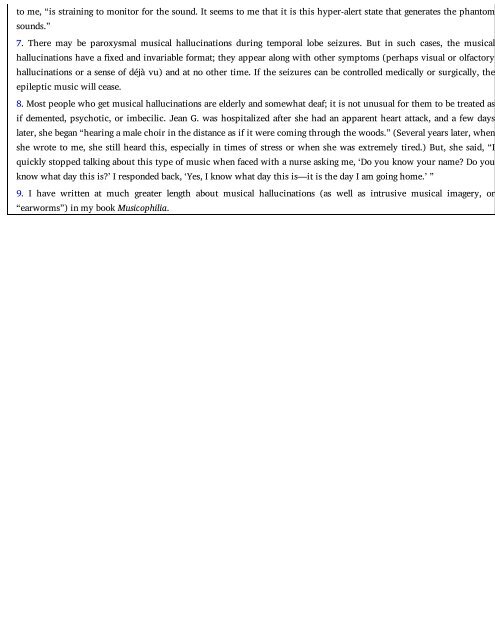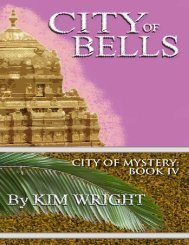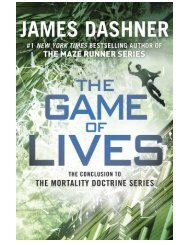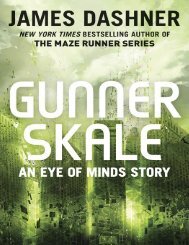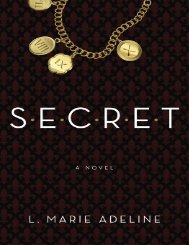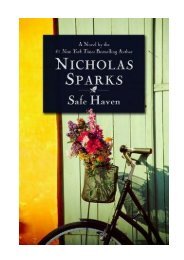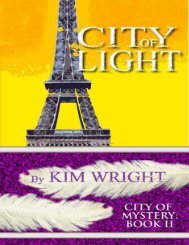auditory deprivation or deafness. In this way, the musical hallucinations of the elderly deaf are analogous to the visual hallucinations of Charles Bonnet syndrome. But although the musical hallucinations of deafness and the visual hallucinations of CBS may be akin physiologically, they have great dierences phenomenologically, and these reect the very dierent nature of our visual worlds and our musical worlds— dierences evident in the ways we perceive, recollect, or imagine them. We are not given an already made, preassembled visual world; we have to construct our own visual world as best we can. This construction entails analysis and synthesis at many functional levels in the brain, starting with perception of lines and angles and orientation in the occipital cortex. At higher levels, in the inferotemporal cortex, the “elements” of visual perception are of a more complex sort, appropriate for the analysis and recognition of natural scenes, objects, animal and plant forms, letters, and faces. Complex visual hallucinations entail the putting together of such elements, an act of assemblage, and these assemblages are continually permuted, disassembled, and reassembled. Musical hallucinations are quite dierent. With music, although there are separate functional systems for perceiving pitch, timbre, rhythm, etc., the musical networks of the brain work together, and pieces cannot be signicantly altered in melodic contour or tempo or rhythm without losing their musical identity. We apprehend a piece of music as a whole. Whatever the initial processes of musical perception and memory may be, once a piece of music is known, it is retained not as an assemblage of individual elements but as a completed procedure or performance; music is performed by the mind/brain whenever it is recollected; and this is also so when it erupts spontaneously, whether as an earworm or as a hallucination. 1. The real patients, however, were more observant. “You’re not crazy,” said one. “You’re a journalist or a professor.” 2. Freud was not unsympathetic to the notion of telepathy; his “Psychoanalysis and Telepathy” was written in 1921, though published only posthumously. 3. Recently, a number of people who hear voices have organized networks in various countries asserting their “right” to hear voices, to have them respected and not dismissed as trivial or pathological. This movement and its signicance are discussed by Ivan Leudar and Philip Thomas in their book Voices of Reason, Voices of Madness and by Sandra Escher and Marius Romme in their 2012 review of the subject. 4. Judith Weissman, in her book Of Two Minds: Poets Who Hear Voices, presents strong evidence, drawn especially from what poets themselves have said, that many of them, from Homer to Yeats, have been inspired by true auditory vocal hallucinations, not just metaphorical voices. 5. Jaynes thought that there might be a reversion to “bicamerality” in schizophrenia and some other conditions. Some psychiatrists (such as Nasrallah, 1985) favor this idea or, at the least, the idea that the hallucinatory voices in schizophrenia emanate from the right side of the brain but are not recognized as one’s own, and are thus perceived as alien. 6. Sarah Lipman has noted, in her blog (www.reallysarahsyndication.com), the phenomenon of “phantom rings” as people imagine or hallucinate the ringing of their cell phones. She links this to a state of vigilance, expectation, or anxiety, as when she thinks she may hear a knock at the door or her baby crying. “Part of my consciousness,” she wrote
to me, “is straining to monitor for the sound. It seems to me that it is this hyper-alert state that generates the phantom sounds.” 7. There may be paroxysmal musical hallucinations during temporal lobe seizures. But in such cases, the musical hallucinations have a xed and invariable format; they appear along with other symptoms (perhaps visual or olfactory hallucinations or a sense of déjà vu) and at no other time. If the seizures can be controlled medically or surgically, the epileptic music will cease. 8. Most people who get musical hallucinations are elderly and somewhat deaf; it is not unusual for them to be treated as if demented, psychotic, or imbecilic. Jean G. was hospitalized after she had an apparent heart attack, and a few days later, she began “hearing a male choir in the distance as if it were coming through the woods.” (Several years later, when she wrote to me, she still heard this, especially in times of stress or when she was extremely tired.) But, she said, “I quickly stopped talking about this type of music when faced with a nurse asking me, ‘Do you know your name? Do you know what day this is?’ I responded back, ‘Yes, I know what day this is—it is the day I am going home.’ ” 9. I have written at much greater length about musical hallucinations (as well as intrusive musical imagery, or “earworms”) in my book Musicophilia.
- Page 3 and 4: THIS IS A BORZOI BOOK PUBLISHED BY
- Page 5 and 6: Contents Cover Title Page Copyright
- Page 7 and 8: such things as misperceptions or il
- Page 9 and 10: happens to be not there, that is al
- Page 11 and 12: ut nothing else amiss. Neurological
- Page 13 and 14: week—a long, hot journey to see a
- Page 15 and 16: Marjorie J. wrote to me in 1995 abo
- Page 17 and 18: a foot above her head and have to c
- Page 19 and 20: eyes. There are strong tendencies t
- Page 21 and 22: window into both the powers and the
- Page 23 and 24: Many people with mild cognitive imp
- Page 25 and 26: hallucinations typically do not int
- Page 27 and 28: 2 The Prisoner’s Cinema: Sensory
- Page 29 and 30: of the body’s position and even i
- Page 31 and 32: article. The immobility produced by
- Page 33 and 34: 3 A Few Nanograms of Wine: Hallucin
- Page 35 and 36: tasting metallic and a bit rotten,
- Page 37 and 38: was … wet cardboard).” Prior to
- Page 39 and 40: The voices not only speak to the pa
- Page 41 and 42: of the table to another or to use a
- Page 43 and 44: they were printed on a piece of pap
- Page 45 and 46: pauses, inections and increases and
- Page 47: come to enjoy their internal music
- Page 51 and 52: I n contrast to these postencephali
- Page 53 and 54: furry black animal leap onto the di
- Page 55 and 56: pattern of damage in parts of the b
- Page 57 and 58: of persecution, and occasionally th
- Page 59 and 60: 6 Altered States H umans share much
- Page 61 and 62: By the 1890s, Westerners were also
- Page 63 and 64: sky spangled with eyes of ame, diss
- Page 65 and 66: of stereo vision—or even stereo h
- Page 67 and 68: So one Sunday morning, I counted ou
- Page 69 and 70: was utterly transported. I had take
- Page 71 and 72: But it was not. It was getting ligh
- Page 73 and 74: excitements even further that I tur
- Page 75 and 76: named Anhalonium lewinii in his hon
- Page 77 and 78: scintillating scotoma itself, which
- Page 79 and 80: years this was the unvarying aura,
- Page 81 and 82: for services, I was more interested
- Page 83 and 84: But Hughlings Jackson (sometimes ca
- Page 85 and 86: Then she lost consciousness. She ca
- Page 87 and 88: after the actual attack. Laura has
- Page 89 and 90: The patient was an intelligent man,
- Page 91 and 92: might then go on to experience “a
- Page 93 and 94: uriously, though Peneld described s
- Page 95 and 96: hallucinations of psychosis, even t
- Page 97 and 98: 3. David Ferrier, a contemporary of
- Page 99 and 100:
9 Bisected: Hallucinations in the H
- Page 101 and 102:
they come? Surely it was not normal
- Page 103 and 104:
W hile Marlene experienced protract
- Page 105 and 106:
colour was wrong.” He always real
- Page 107 and 108:
two people with temporal lobe epile
- Page 109 and 110:
left could not cope with a normal d
- Page 111 and 112:
fever. His letter to Darwin proposi
- Page 113 and 114:
The innkeeper had some delusions, t
- Page 115 and 116:
emarkable sight, a “pageant of li
- Page 117 and 118:
I replied that I would not dream of
- Page 119 and 120:
these hallucinations that some of h
- Page 121 and 122:
In Speak, Memory, Nabokov provided
- Page 123 and 124:
suggested. Neuroscientists now tend
- Page 125 and 126:
hypnopompic images: The most typica
- Page 127 and 128:
colleagues (Gurney et al.) publishe
- Page 129 and 130:
12 Narcolepsy and Night Hags S omet
- Page 131 and 132:
hallucinated or perhaps dreamt it,
- Page 133 and 134:
were woken during REM sleep, they w
- Page 135 and 136:
13 The Haunted Mind I n Charles Bon
- Page 137 and 138:
grandfather walked in and I was so
- Page 139 and 140:
delusional states that can go with
- Page 141 and 142:
away in a separate, subterranean ch
- Page 143 and 144:
hallucinatory, almost delusional wo
- Page 145 and 146:
Sarah had many such experiences; so
- Page 147 and 148:
sometimes the first and last halluc
- Page 149 and 150:
14 Doppelgängers: Hallucinating On
- Page 151 and 152:
into gloves with sensors that would
- Page 153 and 154:
a man leaning casually against the
- Page 155 and 156:
over and beating him. His only inte
- Page 157 and 158:
position and movement of one’s li
- Page 159 and 160:
15 Phantoms, Shadows, and Sensory G
- Page 161 and 162:
hantom limbs are hallucinations ins
- Page 163 and 164:
“amputated” from the neck down
- Page 165 and 166:
on the surface of a virtual table).
- Page 167 and 168:
surroundings, hyperalert. It is wel
- Page 169 and 170:
eligious sphere … [and] my friend
- Page 171 and 172:
Acknowledgments I am most grateful,
- Page 173 and 174:
2006. Induction of an illusory shad
- Page 175 and 176:
Devinsky, Orrin, and George Lai. 20
- Page 177 and 178:
childhood sexual abuse. Australian
- Page 179 and 180:
McKellar, Peter, and Lorna Simpson.
- Page 181 and 182:
and Motor Skills 70: 1227-32. Schne
- Page 183 and 184:
Permissions Acknowledgments Gratefu
- Page 185 and 186:
A Note About the Author Oliver Sack


